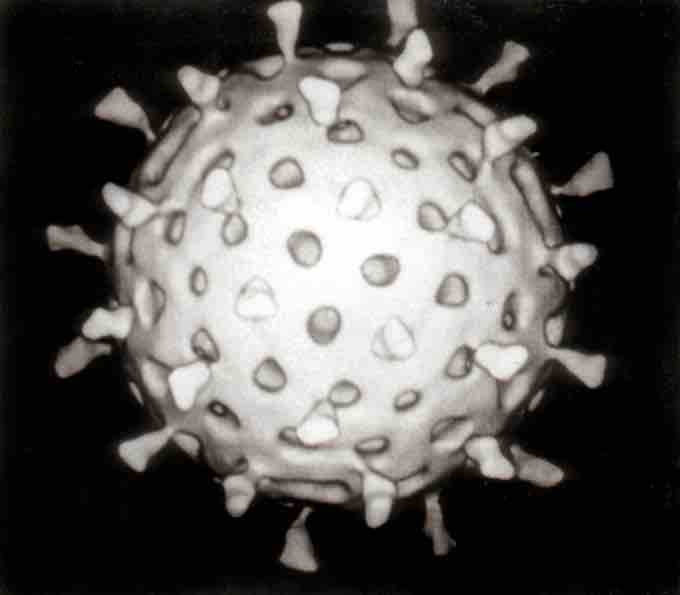A virus is an infectious agent of small size and simple composition that can multiply only in living cells of animals, plants, or bacteria . They range in size from about 20 to 400 nanometres in diameter (1 nanometre = 10-9 meters). By contrast, the smallest bacteria are about 400 nanometres in size. A virus consists of a single- or double-stranded nucleic acid and at least one protein surrounded by a protein shell, called a capsid; some viruses also have an outer envelope composed of fatty materials (lipids) and proteins. The nucleic acid carries the virus's genome—its collection of genes—and may consist of either deoxyribonucleic acid (DNA) or ribonucleic acid (RNA). The protein capsid provides protection for the nucleic acid and may contain enzymes that enable the virus to enter its appropriate host cell.

Viral structure
Rotavirus particles measure 76.5 nm in diameter and are not enveloped.
There exists a strong association between viral geometry and features of viral disease outbreaks. The amount and arrangement of the proteins and nucleic acid of viruses determine their size and shape. The protein and nucleic acid constituents have properties unique for each class of virus; when assembled, they determine the size and shape of the virus for that specific class.
Only the largest and most complex viruses can be seen under the light microscope at the highest resolution. Any determination of the size of a virus also must take into account its shape, since different classes of viruses have distinctive shapes. Shapes of viruses are predominantly of two kinds: rods, or filaments, so called because of the linear array of the nucleic acid and the protein subunits; and spheres, which are actually 20-sided (icosahedral) polygons. Most plant viruses are small and are either filaments or polygons, as are many bacterial viruses. The larger and more-complex bacteriophages contain double-stranded DNA as their genetic information and combine both filamentous and polygonal shapes. The classic T4 bacteriophage is composed of a polygonal head, which contains the DNA genome, and a special-function rod-shaped tail of long fibres. Structures such as these are unique to the bacteriophages.